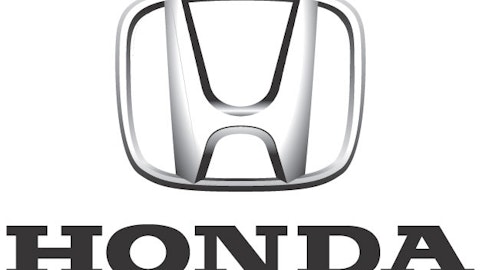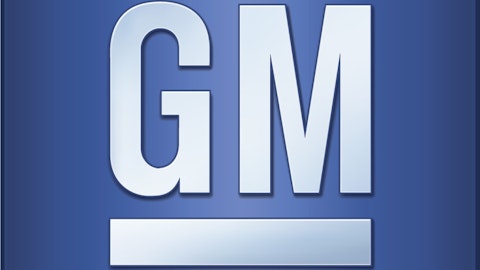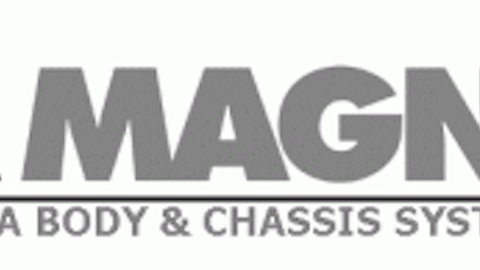
U.S. sales of Ford’s Fiesta have been booming. The new high-performance Fiesta ST is already doing very well, executives said on Wednesday. Photo credit: Ford Motor Co.
Ford Motor Company (NYSE:F) said on Wednesday that its U.S. sales in August were up 12% over year-ago totals, ahead of analyst estimates, on strong sales at both ends of the product spectrum – pickups and small cars.
That wasn’t enough to keep pace with Ford Motor Company (NYSE:F)’s big Japanese rivals, Honda Motor Co Ltd (ADR) (NYSE:HMC) and Toyota Motor Corporation (ADR) (NYSE:TM), who gained 27% and 23%, respectively.
But Ford Motor Company (NYSE:F) was hurt by a seasonal dip in commercial fleet sales. Its retail-market gain of 20% was more than respectable – and it might have been higher if Ford hadn’t been running short of some key models.
More good gains for Ford’s pickup line
Ford Motor Company (NYSE:F) has really had strong sales more or less across its lineup in recent months, with particular strength in both pickups and small cars, and August’s results were right in line with what we’ve been seeing. Sales of Ford’s F-Series pickup line were up 22%, as Ford – the big-pickup market leader – continued to ride a surge in demand for pickups fueled by strength in housing and energy services.
Ford Motor Company (NYSE:F) sales analyst Erich Merkle said on Wednesday that the company’s incentives on its pickups were up a little from July, about $190 per truck on average, and up about $350 from August of last year, and characterized that as keeping pace with an aggressive market. Archrival General Motors Company (NYSE:GM) is in the process of introducing all-new pickups, and is using incentives to help sell down the last of its old trucks; it’s not surprising that Ford would feel the need to boost its own incentives to keep pace.
But he noted that average transaction prices on the F-Series were up about $800 versus this time last year, so this is a trade-off that’s likely to work out well for Ford’s bottom line when all is said and done.
That boost in transaction prices, plus the big year-over-year gains we’ve seen in overall sales of the F-Series, both bode very well for Ford’s third-quarter profits. The F-Series is widely considered Ford’s most profitable product line.
Ford’s small cars continue to make inroads against the imports
Meanwhile, fuel-efficient cars – once a Detroit afterthought – have become more and more important to new-vehicle buyers as gas prices have surged. Ford’s current lineup of small cars and utilities is its most competitive ever, and sales continued to be brisk in August: Ford said that sales of its small cars as a group were up 30%.
Some of that increase is due to the addition of the C-Max Hybrid, which wasn’t around at this time last year. But some – quite a bit, actually – is due to strong demand for the Fiesta and Focus. Fiesta sales were up over 61% in August, and Ford U.S. sales chief Ken Czubay said that much of that growth came from the East and West Coast regions – longtime import strongholds.

Sales of Ford’s Fusion were up almost 14% despite tight supplies. A new assembly line should help Ford meet demand soon. Photo credit: Ford Motor Co.
Ford also noted that its midsized Fusion sedan had its best August ever. But inventories of the Fusion have been very tight, particularly in those coastal markets. Czubay said that in some markets like Los Angeles and Miami, Fusions are “turning” – a measure of the time that cars spend on dealer lots before being sold – in just 13 days, an extremely short period.
Czubay and Merkle hinted that inventories have been tight on several of Ford’s hot models. The company recently added production for the F-Series and Explorer, and a new assembly line for the Fusion opened in Michigan just last week. Maxed-out assembly lines have been a theme for Ford for a while, and the company may have to do further juggling to increase production of other hot sellers such as the Escape in coming months.
The upshot: Ford’s performance was pretty good, all things considered
At this point, it’s fair to say that Ford’s sales gains in some segments have been limited by supply, not demand. Dealers will have more Fusions to sell in a month or two, and continued tweaks to production schedules should help supplies of other models as well.
But Ford did well with what it had in August. It’s likely that the big sales gains for Toyota Motor Corporation (ADR) (NYSE:TM) and Honda Motor Co Ltd (ADR) (NYSE:HMC) were helped by the favorable exchange-rate shifts we’ve seen over the last several months – shifts that allow the Japanese makers to be more aggressive with pricing and incentives here in the U.S.
But Ford mostly kept pace in terms of retail sales – its most profitable sales – despite some constraints on supplies of models like the Fusion. And really, having to expand to keep up with demand for a solidly profitable lineup of vehicles is a problem that many automakers would like to be having right now.
The article Ford Sales Beat Estimates As Demand Surged originally appeared on Fool.com and is written by John Rosevear.
Fool contributor John Rosevear owns shares of Ford and General Motors. You can connect with him on Twitter at @jrosevear. The Motley Fool recommends Ford and General Motors. The Motley Fool owns shares of Ford.
Copyright © 1995 – 2013 The Motley Fool, LLC. All rights reserved. The Motley Fool has a disclosure policy.




